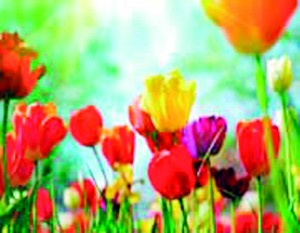Fun Spring Activities for the Classroom
Spring is officially here, and we’re sure your students are just as happy as you are! School is almost over, the weather is warm, and you might have a hard time getting students to focus. Here are six fun activities students will enjoy.
Colour Changing Carnations—A fun science activity, this flower lesson is perfect for spring. In this experiment, students will learn how essential the functions of roots and stems are to plant growth. Give each student a cup and fill half of each with water. Add about 20-30 drops of food coloring into each cup. Place one white carnation in each cup and watch as the carnations change colors throughout the week. Remember to cut the flower stems before placing them in their cups. Fun tip: bring a few different colors of food coloring to class and allow students to choose what color they would like to dye their carnation (let them bring their flowers home at the end of the week!).
Pair the Plants—Students learn why plants have both common and scientific names, then complete the worksheet (provided) by matching each common plant name with its scientific name.
Flower Hunt—Elementary school students will enjoy this fun game. Scatter flowers (real or paper cut outs) around the classroom. Hand each student a paper bag and ask them to search the room for flowers. After 10 minutes or so, ask students to return to their seats and count the number of flowers they found. Who found the most? How many flowers total did the children find? What was the average number of flowers each child collected? For older students, you can create a bar graph of information collected.
Egg Matching—Using plastic eggs, write capital letters on the top half of the egg and lower case letters on the bottom half using a magic marker. Mix up the egg halves in the center of the room (or split the class into groups and hand each group a few egg halves) and have students put the eggs together. For older students, you can use math problems such as 5+6, or 7 x 4 on the top half of the egg and the answer on the bottom half.
Jelly Bean Flavor Guess—Purchase an assortment of flavored gourmet jelly beans. Be sure that there is enough of each flavor for each child to have one. Pass out one of each bean to each student, have them taste the bean and then write down what they think the flavor is. The child who guesses the most flavors correctly wins! (To make this less complicated,only buy one flavor in each color: red, white, green, blue, pink).
Poet of the Day—Did you know that April is National Poetry Month? Celebrate this theme with your students by introducing them to a variety of poetic forms. Assign one or two students each day as “poet of the day” for the month of April. Provide students with several models for creating different forms of poetry (theme poems, acrostic poems, diamante poems, etc.). Have each student select one form of poetry and write an original poem, which he or she can illustrate. On their assigned days, have students read their poetry out loud to the class.
Education World®
Follow @timesonlinelk
comments powered by Disqus


